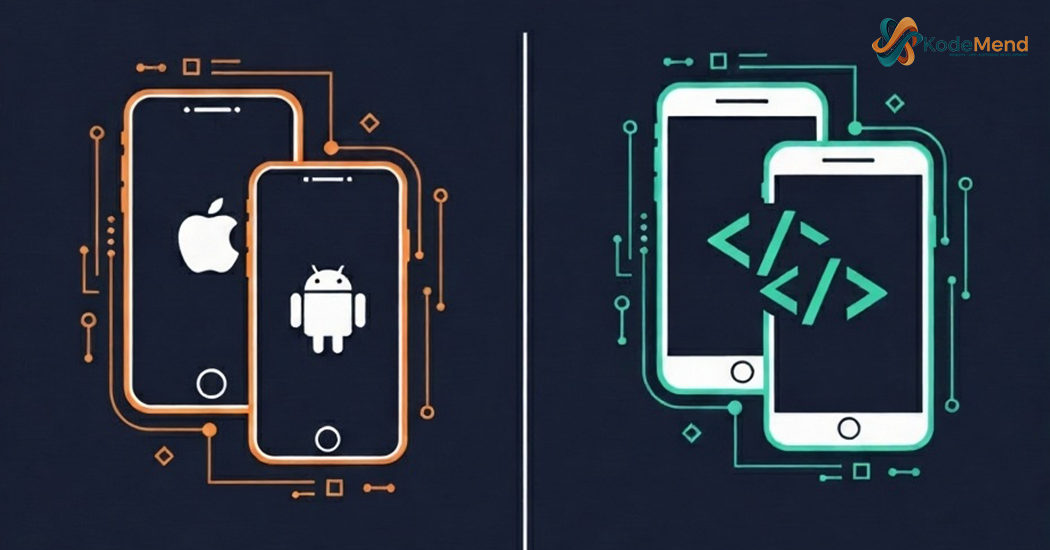
Blog details
Native or Cross-Platform? Decoding the Best Mobile App Strategy with KodeMend.

One of the most critical decisions a business faces when launching a mobile app is the development approach: Native or Cross-Platform? Native development involves building two separate applications, one for iOS using languages like Swift, and another for Android using Kotlin. This approach offers unparalleled performance, seamless integration with device features (like the camera and GPS), and delivers the user experience that users on each platform expect. The result is a high-quality, polished application, but it often comes with a higher cost and longer development timeline due to maintaining two separate codebases.
On the other side of the spectrum is cross-platform development, utilizing frameworks like React Native or Flutter. This method allows developers to write code once and deploy it across both iOS and Android platforms, significantly reducing development time and costs. It's an excellent choice for many applications, especially content-driven apps or MVPs (Minimum Viable Products). However, it can sometimes come with slight performance trade-offs or limitations in accessing certain native device features. At KodeMend, we don’t believe in a one-size-fits-all solution. We work closely with you to analyze your app's complexity, performance requirements, budget, and long-term goals to recommend and execute the mobile strategy that will drive your success.
 45 min ago
45 min ago
Beyond Pixels: How AI is Reshaping UI/UX Design at KodeMend!
The world of user interface design is undergoing a profound transformation, moving beyond static .......
READ MORE 45 min ago
45 min ago
Building the Decentralized Future: Navigating Web3 with KodeMend's Web Development Expertise
The internet is on the cusp of its next major evolution: Web3. While Web1 was about static .....
READ MORE 45 min ago
45 min ago
Unchained E-commerce: Why Headless is the Future and How KodeMend Can Build It For You.
For years, traditional e-commerce platforms have been "monolithic," meaning the front-end ......
READ MORE